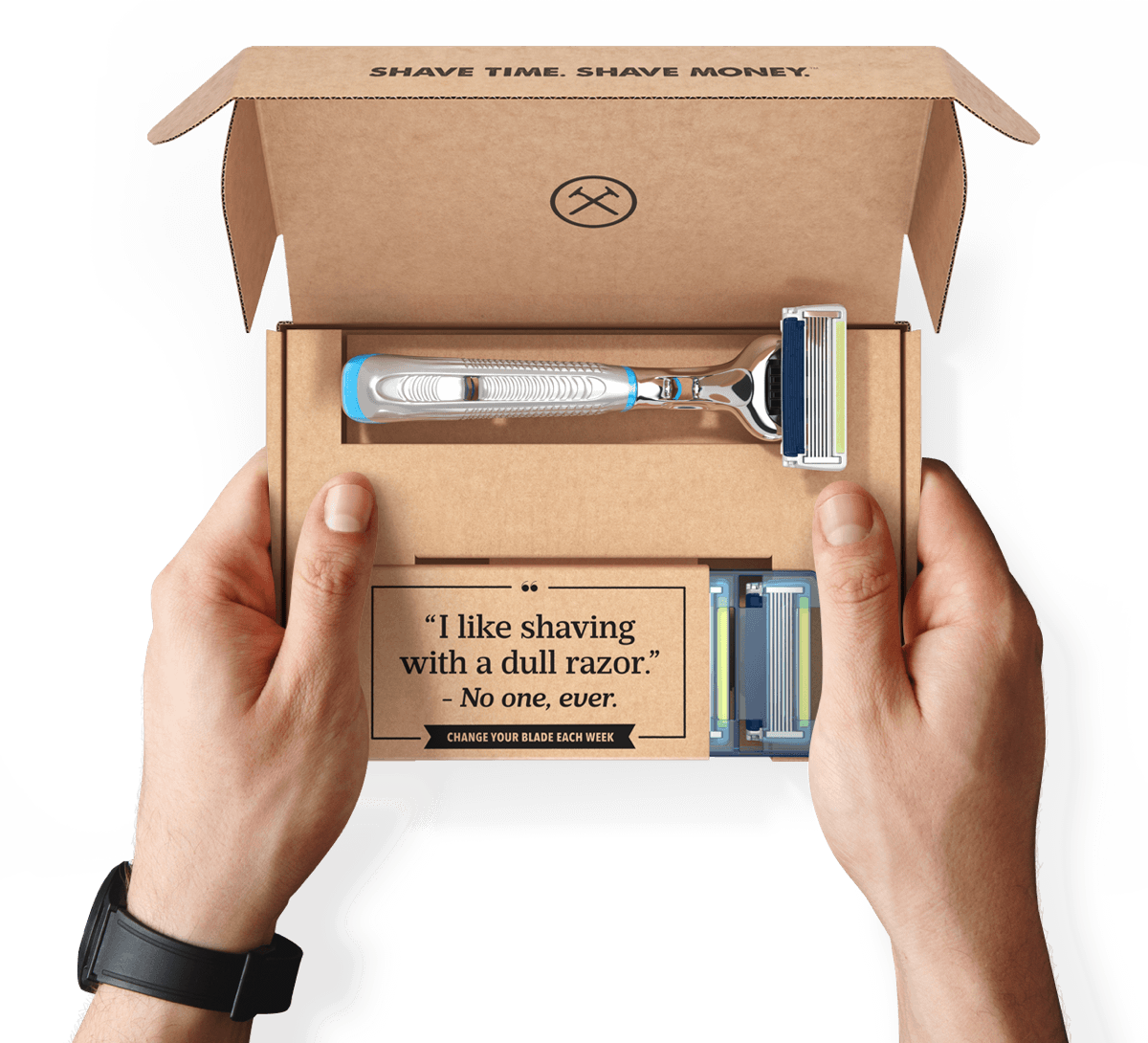Empowered Challengers and professional masseurs have something in common: they don’t take touchpoints for granted.
Like a weighted elbow to a stubborn muscle knot, Challengers know where to focus their energy to achieve maximum results. Whether it’s a before-purchase social post, a point-of-sale poster or a memorable thank you email, knowing how to get (and stay) in touch with your customers is the key to building brand loyalty that lasts. The following companies are licensed message therapists.
Dollar Shave Club
In terms of touchpoint perfection, few brands come closer than Dollar Shave Club. Unlike many subscription services that bank on the “set it and forget it” model, DSC constantly entertains and educates its consumers through their owned media channels: social channels, website, packaging, newsletters, articles, etc.
By now, we’re all familiar with their award-winning YouTube video, but the personality doesn’t stop there. It’s everywhere from the copy on their homepage, to the content on their blog, to the purchase confirmations and especially the unboxing experience. Dollar Shave Club is a brand that knows their target consumer and how to reach them without spending an arm and a leg on media placements.
The Boring Company
Another example of turning owned media into earned media is Elon Musk (aka, The Real-Life Tony Stark) and The Boring Company. They’ve raised a surprising amount of support for their mission to build underground roads beneath the cluttered streets of LA, and a lot of it came from people who will probably never use them. How? Musk’s devout Twitter followers.
The Boring Company started raising money and awareness by selling hats like the Trump campaign. It did so well, Musk announced (via Twitter) that he was going to start selling flamethrowers. This subtle Spaceballs reference delighted his herd of nerds and resulted in the sale of all 20,000 flamethrowers at $500 a pop. That may not be enough to fund an underground transit system, but the buzz it generated earned him millions of dollars in free publicity that’s sure to speak volumes to outside investors.
LEGO
Everybody’s favorite walking hazard, LEGO, invented a new touchpoint for their most passionate tinkerers. It’s called LEGO Ideas, and it’s a forum where hobbyists suggest which box sets LEGO should come out with next. In return, chosen submitters get their invention turned into an actual LEGO product and receive a portion of the sales.
The result is a close-knit community of LEGO lovers who not only communicate with the brand, but also with each other. And like every crowdsourcing campaign in the modern age, LEGO encourages submitters to tap into their social networks to improve their chances of getting selected. LEGO Ideas is proof that sometimes, brands are better off letting their fans do the talking.
JetBlue
Like most airlines, JetBlue does all the eblasts and bus wraps we’ve come to expect, but it’s their in-flight experience that really set themselves apart. From the iconic (and unlimited) blue potato chips to their proprietary Shut-Eye Service™, JetBlue knows how to differentiate.
Case in point, their Flybabies initiative. Rather than look the other way while passengers scoff at crying children, JetBlue turned that universally loathed scenario into a cause for celebration. Any time a baby cried on select routes, everyone on the plane got a discount on a future flight. It made every parent and passenger happy (except the crying babies).
As these Empowered Challengers demonstrate, taking the time to identify your touchpoints and deliver unique messages is the formula for winning more mind and market share. People are constantly being bombarded by branded content, but if you deliver yours at the right time, and with the right tone, they’ll listen.


